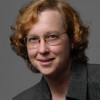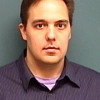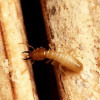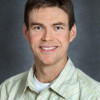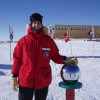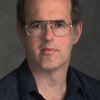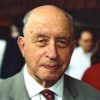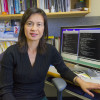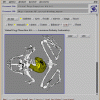News Center
Interview with Wes Bethel, principal investigator for the SciDAC Visualization and Analytics Center for Enabling Technologies (VACET)
When the Department of Energy’s Office of Science announced the latest round of awards in the Scientific Discovery through Advanced Computing (SciDAC) program in September, the funded projects included a new Center for Enabling Technologies that will focus on meeting the visualization and analytics needs of scientists. Called the SciDAC Visualization and Analytics Center for Enabling Technologies, or VACET, the project will be co-led by Wes Bethel, head of the Visualization Group at Lawrence… Read More »
Astrophysicist’s Algorithm Leads to Discovery of Super-massive Supernova
A group of scientists affiliated with the SuperNova Legacy Survey (SNLS) have found startling evidence that there is more than one kind of Type Ia supernova, a class of exploding stars which until now has been regarded as essentially uniform in all important respects. Supernova SNLS-03D3bb is more than twice as bright as most Type Ia supernovae but has much less kinetic energy, and appears to be 1.5 times as massive as a typical Type Ia. The lead authors of the report, which appeared in the… Read More »
Study Links Human Activities to Warmer Oceans, Stronger Hurricanes
New research shows that rising sea surface temperatures (SSTs) in hurricane breeding grounds of the Atlantic and Pacific Oceans are unlikely to be purely natural in origin. These findings, according to a team of researchers including Michael Wehner of CRD’s Scientific Computing Group, complement earlier work that uncovered compelling scientific evidence of a link between warming SSTs and increases in hurricane intensity. Previous studies to understand the causes of SST changes have focused… Read More »
CRD’s Kathy Yelick Named One of HPCwire’s People to Watch in 2006
Kathy Yelick, leader of the Future Technologies Group in LBNL’s Computational Research Division, has been named on of 16 “People to Watch” in 2006 by HPCwire, a weekly newsletter covering high performance computing and networking. In addition to her role at the Lab, Yelick is also an associate professor of computer science at UC Berkeley. According to HPCwire, Yelick is worth watching “because she's already a proven dynamo based on her contributions to the development of the Titanium… Read More »
Researchers Analyze Performance, Potential of Cell Processor
Though it was designed as the heart of the upcoming Sony PlayStation3 game console, the STI Cell processor has created quite a stir in the computational science community, where the processor’s potential as a building block for high performance computers has been widely discussed and speculated upon. To evaluate Cell’s potential, computer scientists at the U.S. Department of Energy’s Lawrence Berkeley National Laboratory evaluated the processor’s performance in running several… Read More »
New Microbial Metagenome Data Analysis System in Production
An experimental metagenomics data management and analysis system co-developed by the Biological Data Management and Technology Center (BDMTC) at Berkeley Lab with the Genome Biology Program and Microbial Ecology Program at DOE’s Joint Genome Institute and released earlier this year is also already helping produce scientific discoveries. Called IMG/M, the system extends the Integrated Microbial Genomes (IMG) system with the ability to integrate and analyze metagenome data, and has provided… Read More »
CRD’s Helen He Develops Method for Easier Use of Community Climate System Model
As part of a comprehensive national project to provide U.S. climate researchers with state-of-the-art modeling capabilities, Yun “Helen” He of CRD’s Scientific Computing Group has developed a “single executable” mode for the Community Climate System Model (CCSM) on NERSC’s IBM SP. CCSM consists of separate programs for modeling atmosphere, ocean, sea ice and land surface and a flux coupler linking the four components. These components are integrated together in original multiple… Read More »
Enron Email Database Proves Easy Pickings for LBNL’s FastBit Search Technology
As the trial of former Enron executives gets under way, the extensive email trails left by employees of the Houston energy firm are expected to provide both compelling evidence and entertaining insight. In 2003, as part of an investigation into Enron’s business dealings in California, the Federal Energy Regulatory Commission made public a database containing more than 500,000 emails sent by 151 Enron employees. Subjects ranged from corporate decisions to jokes to personal matters. While the… Read More »
CRD’s pyGlobus Tools Proving Popular
CRD’s Distributed Systems Department (DSD), which has led the development of the de facto standard tools for developing Grid Services, applications and portals using the Python programming language, proved a popular draw at the LBNL booth at the SC05 conference in Seattle. Python is a high-level interpreted language that supports a rapid application development cycle. Python’s minimal syntax makes it an ideal language for use by non-computer scientists. It also easily supports binding… Read More »
Former DOE Fellow Wilkening Returns to Berkeley
Jon Wilkening, who earned his Ph.D. in 2002 from UC Berkeley working with CRD Math Group Lead James Sethian, has returned to Berkeley as an assistant professor and collaborator with the Math Group. Wilkening accepted a DOE Computational Science Graduate Fellowship in 1997 (while declining an NSF fellowship) and was named a Fred A. Howes Scholar in Computational Science in 2003. As a DOE fellow, he worked as a research assistant in the Math Group from 1997 to 2002. His general research interests… Read More »
CRD’s Keith Beattie Wrapping Up Three Weeks in Antarctica
During a time of the year when many people have turned their attention to activities at the North Pole, Keith Beattie of the Distributed Systems Department has been focused on the IceCube project at the South Pole (http://icecube.wisc.edu/). Beattie, a software engineer who has been working on testing the data acquisition software for IceCube, will wrap up his three-week stint at the Antarctica site on Dec. 21 — just in time to spend Christmas on the beach in Australia. Here’s Beattie’s… Read More »
Berkeley Lab’s John Bell Receives 2005 Sidney Fernbach Award
John Bell, a senior staff mathematician at the U.S. Department of Energy’s Lawrence Berkeley National Laboratory, has been named as the recipient of the 2005 Sidney Fernbach Award. The Fernbach Award is given by the IEEE Computer Society for an outstanding contribution in the application of high performance computers using innovative approaches. The award was presented at the SC05 conference held Nov. 12-18, 2005, in Seattle. “I am delighted to confirm that you have been selected to receive… Read More »
CRD’s Barenblatt Wins Timoshenko Medal for Applied Mechanics
In November, the American Society of Mechanical Engineers presented Grigory Isaakovich Barenblatt of CRD’s Mathematics Group with the Timoshenko Medal “for seminal contributions to nearly every area of solid and fluid mechanics, including fracture mechanics, turbulence, stratified flows, flames, flow in porous media, and the theory and application of intermediate asymptotics.” The Timoshenko Medal was established in 1957 and is conferred in recognition of distinguished contributions to… Read More »
Groundbreaking Combustion Research Featured on Cover of PNAS Journal
Computational and combustion scientists at the U.S. Department of Energy’s Lawrence Berkeley National Laboratory have earned the cover article in the July 19, 2005 Proceedings of the National Academy of Sciences with their unparalleled computer simulation of turbulent flames. The research by scientists in Berkeley Lab’s Center for Computational Sciences and Engineering and the Environmental Energy Technologies Division has led to a three-dimensional combustion simulation of unmatched… Read More »
ACM Transactions Issue Dedicated to DOE’s ACTS Collection of HPC Tools
The Association of Computing Machinery dedicated the September 2005 issue of Transactions on Mathematical Software (ACM TOMS) to the ACTS Collection. The DOE Advanced CompuTational Software (ACTS) Collection (http://acts.nersc.gov) comprises a set of tools mainly developed at the DOE laboratories. These software tools aim to simplify the solution of common and important computational problems and have substantially benefited a wide range of scientific and industrial applications. The ACTS… Read More »
JGI Releases Latest Version of IMG
An enhanced version of the Integrated Microbial Genomes (IMG) data management system has been released by the U.S. Department of Energy (DOE) Joint Genome Institute (JGI). IMG 1.1 contains 32 new public genomes and 14 new genomes sequenced by DOE JGI, bringing the total of genomes in IMG to 337. These include 301 bacterial, 25 archaeal, and 11 eukaryotic genomes, of which 36 finished and 75 draft genomes were sequenced by DOE JGI. The new IMG 1.1 features enhanced capabilities to improve the… Read More »
NetLogger Helps Supernova Factory Improve Data Analysis
The Nearby Supernova Factory (SNfactory) project, established at Berkeley Lab in 2002, aims to dramatically increase the discovery of nearby Type 1a supernovae by applying assembly-line efficiencies to the collection, analysis and retrieval of large amounts of astronomical data. To date, the program has resulted in the discovery of about 150 Type 1a supernovae – about three times the entire number reported before the project was started. Type Ia supernovae are important celestial bodies… Read More »
Biological Data Management and Technology Center Marks First Year
The Biological Data Management and Technology Center (BDMTC) at Lawrence Berkeley National Laboratory marked its first anniversary with the release of the Integrated Microbial Genomes (IMG) system, a complex biological data management system BDMTC developed in collaboration with the Microbial Genome Analysis Program (MGAP) at the Joint Genome Institute (JGI). As a community resource, IMG integrates JGI’s microbial genome data with publicly available microbial genome data, providing a powerful… Read More »
LBNL Team Takes Software to the End of the Earth
Developing robust, reliable data acquisition software for high-energy physics experiments is always a challenge, but developing such software for an experiment expected to run for up to 15 years while buried in the Antarctic ice poses unique problems. But a team led by Chuck McParland of CRD’s Distributed Scientific Tools Group has risen to the occasion. The first kilometer-long string of 60 detectors recently buried near the South Pole is already recording light pulses as the experiment… Read More »
LBNL Speaker Series in Washington to Feature CRD Expertise
Beginning in February, scientists from CRD will launch a series of presentations at Berkeley Lab’s project office in Washington, D.C. The goal of the series is to better inform the Washington research community about the achievements and expertise of LNBL staff. The LBNL office is located at 901 D Street, SW, Suite 950. The office is in the Aerospace Center, across D Street from L’Enfant Plaza. Wes Bethel, leader of the Visualization Group in CRD, will give the first talk at 9 a.m. Read More »
Face-to-Face Discussion Helps Fusion Scientists Solve Interface Problem
Sometimes, $14 can go a long way. For the price of a train ticket from Manhattan to Princeton, CRD’s Sherry Li was able to meet with scientists at the Princeton Plasma Physics Lab and together they were able to solve problems that were keeping a new fusion code from running fully parallel. Li, a member of the Scientific Computing Group and one of the key developers of the SuperLU library of solvers, had been consulting with Steve Jardin’s group at PPPL for several months as the fusion… Read More »
LBNL’s DataMover Reaches Milestone with Automated Transfer of 18K Files
Amidst the hype and hoopla at the recent SC2004 conference in Pittsburgh, Lawrence Berkeley National Laboratory’s Scientific Data Management Research Group demonstrated the robustness of the group’s DataMover by putting the application through its workaday paces. In doing so, the group reached a milestone when, with a single request, 17,870 data files were moved seamlessly from Brookhaven National Lab in New York to LBNL, both of which are operated by the U.S. Department of Energy. What… Read More »
Crystallization in Silico
When Francis Crick and James Watson deciphered the structure of DNA in 1953, X-ray crystallography became famous; key to their success was crystallography of DNA done by Rosalind Franklin in the laboratory of Maurice Wilkins. X-ray crystallography has long since become the workhorse for structural studies of big biological molecules, including most of the many thousands of proteins whose structures have been solved in the last half century. Crystallizing biological molecules is tricky, however. Read More »
The spirit of Lawrence’s Lab lives at CERN
GENEVA, Switzerland ‑ Six thousand miles east of Berkeley, in the rolling countryside of the Swiss-French border, the spirit of Ernest Lawrence is alive and well. Berkeley Lab’s founder is noted for many contributions to scientific knowledge, but two of his best-known ideas are the invention of the cyclotron and the idea of bringing together groups of people with a diversity of knowledge and expertise to take on the biggest scientific challenges. At CERN, the European Center for Nuclear… Read More »
Anatomy of a Web(bed) Legend
In the wild, a frog may live to 10 years, assuming it survives tadpolehood and doesn’t get eaten by a bird or a fish or some other creature. On the Web, though, a virtual frog named “Fluffy” has easily notched its tenth year despite millions of dissections. Launched in June 1994, by the U.S. Department of Energy’s Lawrence Berkeley National Laboratory, the Virtual Frog Dissection Kit Web site allows users to virtually dissect a frog without all that smelly formaldehyde of high school… Read More »











